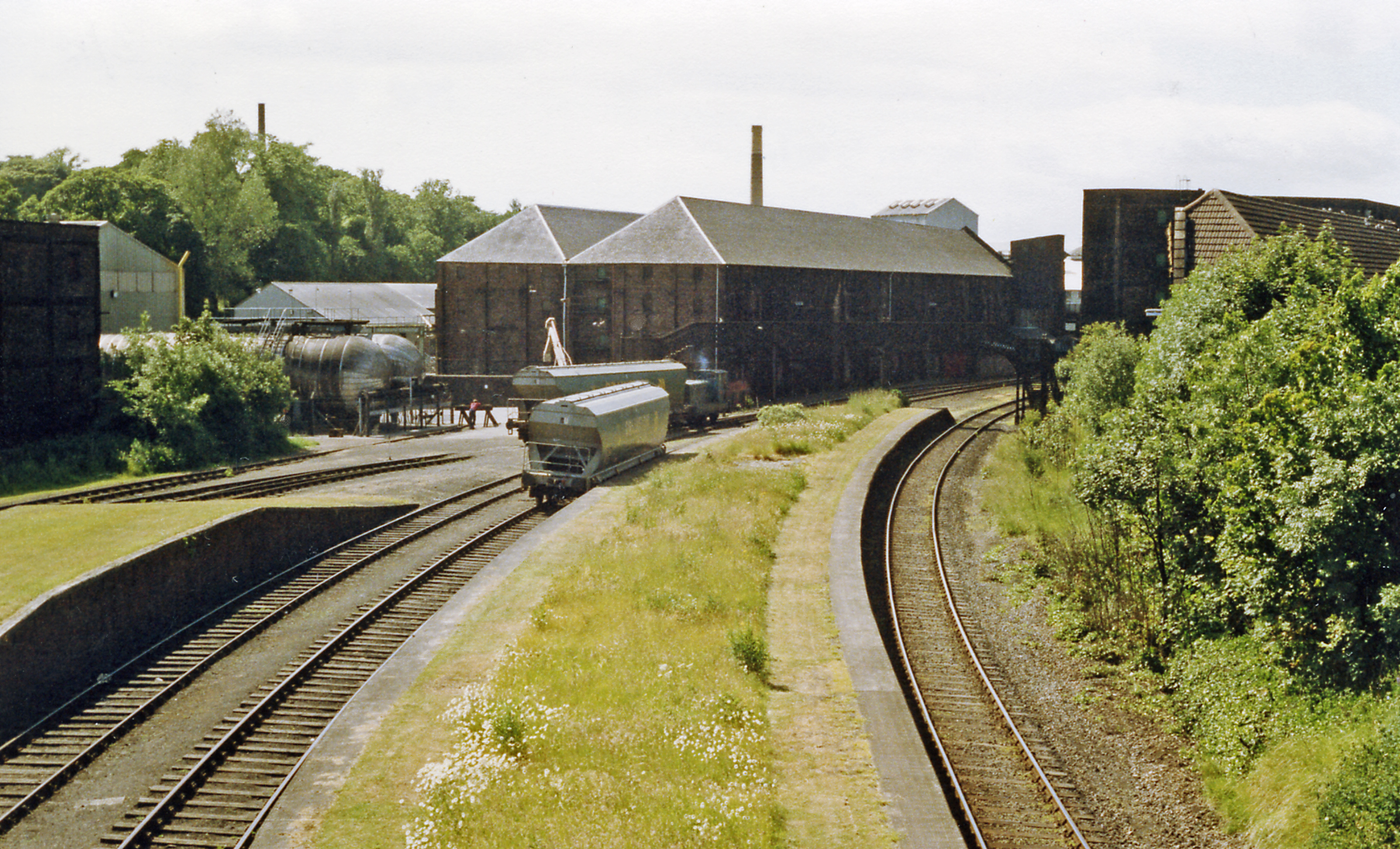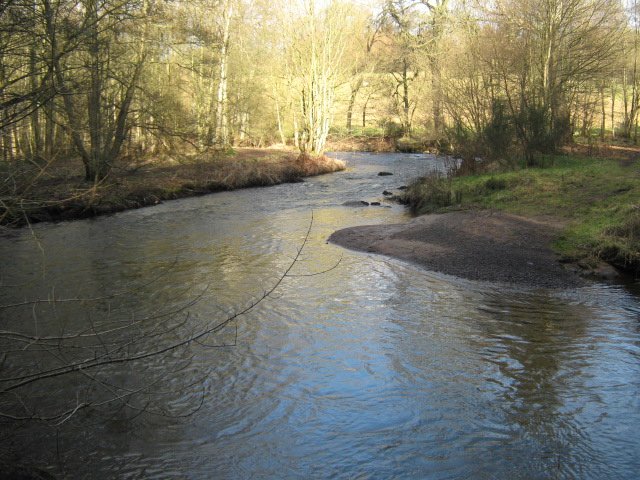|
Windygates
Windygates is a small village and surrounding district in central Fife, Scotland. The district encompasses the following villages, farms and estates; Wellsgreen Farm, Little Lun Farm, Woodbank Farm, The Maw (a former mining community on the Standing Stane Road), Cameron Farm, Isabella (an abandoned mine), Smithyhill, Cameron Bridge, Bridgend, Durie Estate, Duniface Farm, Haughmill (a former weaving community), Drumcaldie, The Meetings (confluence of rivers Leven and Ore), Bankhead of Balcurvie Farm, Fernhill, Fernbank (both former farms), Balcurvie village (a former weaving community), Little Balcurvie (now known as the small holdings), Hawthorn Bank, Kennowayburns and Windygates village itself. Housing demands of the 20th century brought all of these, almost forgotten identities, together into a district now commonly known as Windygates. Windygates is off the A911, west of its sister village Milton of Balgonie, north of Kirkcaldy on the A915 and south of Kennoway on the A916. ... [...More Info...] [...Related Items...] OR: [Wikipedia] [Google] [Baidu] |
Cameron Bridge
Cameron Bridge is a village in the conurbation of Levenmouth in Fife, Scotland. It is near to the village of Windygates and west of the town of Leven. A distillery was established in the 19th century by the Haig family, which is now part of Diageo. The distillery produces Scotch whisky. History and locality It is a settlement at a bridge over the River Leven, which replaced a ford there. When Leven was flooded it was the first upstream crossing. In 1870, an earlier bridge was replaced with a new one. The River Ore joins the Leven a little upstream of the village. Future transport A railway station could be located in Cameron Bridge in the future, which would also serve as at Park and Ride site. Rail freight provisions could also be provided to serve the distillery. This is as part of the Levenmouth rail link. The Cameronbridge Grain Distillery In 1824 the Haig distillery was opened. In 1830 it became the first distillery to produce Grain whisky using the Column still method ... [...More Info...] [...Related Items...] OR: [Wikipedia] [Google] [Baidu] |
Balcurvie
Balcurvie is a Scottish rural hamlet located within the Windygates district of Levenmouth in Fife. People from Balcurvie include Sir Robert Blyth Greig FRSE Fellowship of the Royal Society of Edinburgh (FRSE) is an award granted to individuals that the Royal Society of Edinburgh, Scotland's national academy of science and letters, judged to be "eminently distinguished in their subject". This soci ... (1874–1947). References Hamlets in Fife Levenmouth {{Fife-geo-stub ... [...More Info...] [...Related Items...] OR: [Wikipedia] [Google] [Baidu] |
Milton Of Balgonie
Milton of Balgonie () is a small village in central Fife, Scotland. It is situated east of Glenrothes between the nearby villages of Markinch and Coaltown of Balgonie to the west and Windygates to the east. Nearby attractions include Balgonie Castle which is situated between Milton and Coaltown. The ruins of Balfour House, where Mary, Queen of Scots sometimes resided, are to the south of the village. The village has been home to a number of industries through the ages, from flax, flour and wood mills, and to coal mining, although none now remain active: the sawmill being the last standing, but already partially redeveloped. The coal mine was situated at the west end and was the 'ingaun ee' type: a mine accessible by walking into rather than a vertical shaft. There is little remaining apart from a bricked up entrance in the wall opposite Castle View, some concrete stairs, and the sloped mound of the entrance in the field behind. References Sources The Gazetteer for Scotland [...More Info...] [...Related Items...] OR: [Wikipedia] [Google] [Baidu] |
Gordon Donaldson
Gordon Donaldson, (13 April 1913 – 16 March 1993) was a Scottish historian. Life He was born in a tenement at 140 McDonald RoadEdinburgh and Leith Post Office Directory, 1912 off Leith Walk in northern Edinburgh on 13 April 1913 the son of Rachel Swan and Magnus Donaldson. He was of Shetland descent. Donaldson attended Broughton Elementary School (adjacent to his home) and then the Royal High School of Edinburgh (1921–31), before being awarded a scholarship to study at the University of Edinburgh. He also supplemented his income by undertaking some tutoring. After graduating in 1935 with a first-class Honours Degree in History ( MA), he gained his PhD in 1938 at the Institute of Historical Research in London, where he also won the David Berry Prize from the Royal Historical Society. Donaldson also has a DLitt degree. After working as an archivist at the General Register Office for Scotland 1938–1947, he was appointed to a lectureship in Scottish History at the U ... [...More Info...] [...Related Items...] OR: [Wikipedia] [Google] [Baidu] |
Fife
Fife (, ; gd, Fìobha, ; sco, Fife) is a council area, historic county, registration county and lieutenancy area of Scotland. It is situated between the Firth of Tay and the Firth of Forth, with inland boundaries with Perth and Kinross (i.e. the historic counties of Perthshire and Kinross-shire) and Clackmannanshire. By custom it is widely held to have been one of the major Pictish kingdoms, known as ''Fib'', and is still commonly known as the Kingdom of Fife within Scotland. A person from Fife is known as a ''Fifer''. In older documents the county was very occasionally known by the anglicisation Fifeshire. Fife is Scotland's third largest local authority area by population. It has a resident population of just under 367,000, over a third of whom live in the three principal towns, Dunfermline, Kirkcaldy and Glenrothes. The historic town of St Andrews is located on the northeast coast of Fife. It is well known for the University of St Andrews, the most ancient univers ... [...More Info...] [...Related Items...] OR: [Wikipedia] [Google] [Baidu] |
River Leven, Fife
The River Leven ( gd, Lìobhann / Abhainn Lìobhann) is a river in Fife, Scotland. It flows from Loch Leven into the Firth of Forth at the town of Leven. The river is home to brown trout and hosts a run of sea trout and atlantic salmon. The estuary has bass and mullet. In previous centuries its water was used to power linen mills on its banks, particularly near Markinch, as well as three paper mills: Smith Anderson in Leslie, and Tullis Russell and John Dixon of Markinch. The River Ore, Fife A river is a natural flowing watercourse, usually freshwater, flowing towards an ocean, sea, lake or another river. In some cases, a river flows into the ground and becomes dry at the end of its course without reaching another body of wat ... is a tributary of the River Leven, joining it at . External linksScottish gazetteer on the river"Forth District Salmon Fishery Board""River Forth Fisheries Trust""River Leven Angling Club" Levenmouth Rivers of Fife 0Leven {{ ... [...More Info...] [...Related Items...] OR: [Wikipedia] [Google] [Baidu] |
Villages In Fife
A village is a clustered human settlement or community, larger than a hamlet but smaller than a town (although the word is often used to describe both hamlets and smaller towns), with a population typically ranging from a few hundred to a few thousand. Though villages are often located in rural areas, the term urban village is also applied to certain urban neighborhoods. Villages are normally permanent, with fixed dwellings; however, transient villages can occur. Further, the dwellings of a village are fairly close to one another, not scattered broadly over the landscape, as a dispersed settlement. In the past, villages were a usual form of community for societies that practice subsistence agriculture, and also for some non-agricultural societies. In Great Britain, a hamlet earned the right to be called a village when it built a church. [...More Info...] [...Related Items...] OR: [Wikipedia] [Google] [Baidu] |


